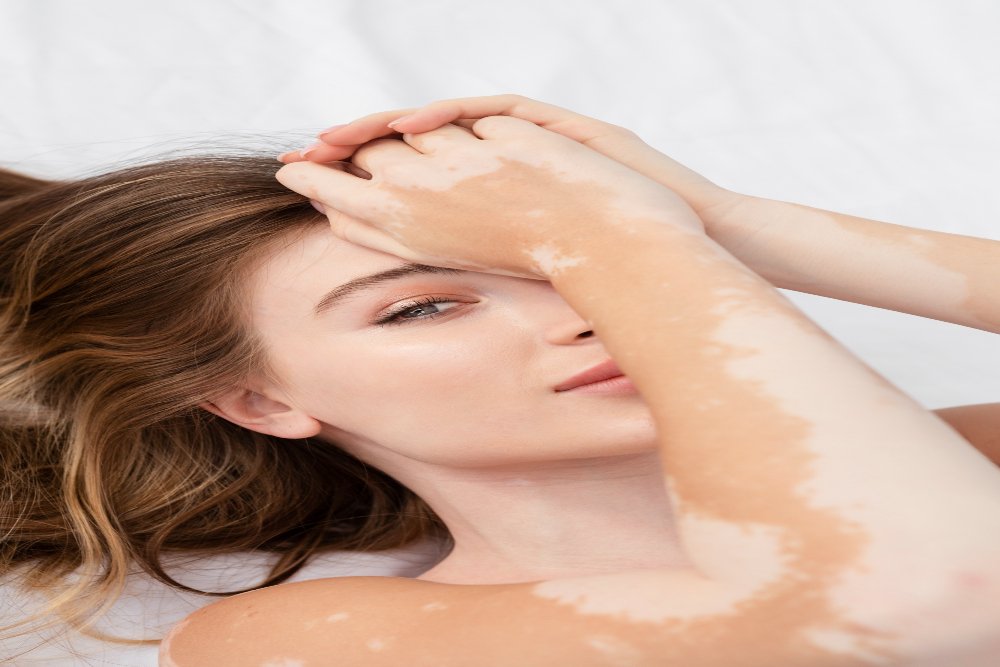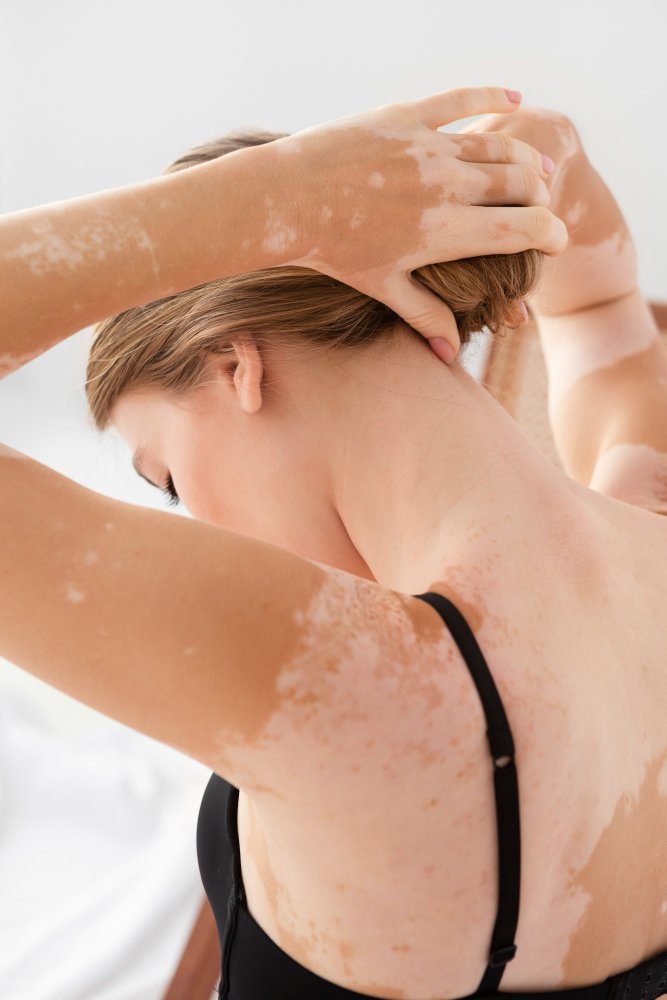
Fading Colors: Understanding Vitiligo and Its Impact on the Skin
Vitiligo is more than a skin condition; it’s a story of color, confidence, and care. When the skin starts losing its pigment, it often brings emotional and physical challenges. In Fading Colors: Understanding Vitiligo and Its Impact on the Skin, we uncover what causes this condition, how it changes the skin, and how nutrition and lifestyle can help manage it naturally.
🌤️ What Is Vitiligo?
Vitiligo is a long-term disorder where patches of skin lose color because the pigment-producing cells, called melanocytes, stop functioning or die. These white or light patches can appear anywhere—on the face, hands, elbows, or even scalp. While vitiligo is not harmful or contagious, it often affects how people feel about themselves.
In Fading Colors: Understanding Vitiligo and Its Impact on the Skin, understanding the science behind these color changes helps reduce fear and stigma.
🧬 Causes Behind Fading Colors
The exact cause of vitiligo is complex, but researchers believe several factors contribute to it. One of the main reasons, as explained in Fading Colors: Understanding Vitiligo and Its Impact on the Skin, is an autoimmune reaction—the body’s defense system mistakenly attacks its own pigment cells.
In addition, genetic factors play a strong role. If vitiligo runs in your family, your chances of developing it are higher. Environmental triggers, such as emotional stress, severe sunburn, or contact with certain chemicals, can also start or worsen the condition.
Furthermore, oxidative stress—an imbalance between free radicals and antioxidants—can damage melanocytes. This means maintaining antioxidant balance through healthy nutrition may help protect your skin cells.
🩺 How Vitiligo Affects the Skin
Vitiligo mainly causes loss of pigment, leading to white or pale patches that often appear symmetrically. These patches are more noticeable on darker skin and may spread gradually. Over time, hair in affected areas can also turn white or gray.
In Fading Colors: Understanding Vitiligo and Its Impact on the Skin, it’s important to understand that the affected skin becomes more sensitive to sunlight because it lacks melanin, the pigment that protects against UV rays. Therefore, using sunscreen, wearing protective clothing, and avoiding harsh sunlight are essential steps to prevent further damage.
🧠 The Emotional Side of Vitiligo
Vitiligo doesn’t just change appearance—it can also affect emotions deeply. Many people feel self-conscious, especially when the patches appear on visible areas like the face or hands. However, awareness and acceptance can transform that experience.
As highlighted in Fading Colors: Understanding Vitiligo and Its Impact on the Skin, building self-confidence and seeking support from family, friends, or vitiligo communities can make a big difference. Mental well-being is just as important as physical care.
🥦 The Role of Nutrition in Skin Health
Even though there is no permanent cure for vitiligo, proper nutrition can help maintain healthy skin and support immune balance. Eating foods rich in antioxidants, such as berries, spinach, carrots, and nuts, helps reduce oxidative stress that damages pigment cells.

Additionally, vitamins like B12, C, and D, along with minerals such as zinc, copper, and iron, play key roles in melanin production and skin repair. According to Fading Colors: Understanding Vitiligo and Its Impact on the Skin, including omega-3-rich foods like salmon, flaxseeds, and walnuts also supports overall skin health.
Moreover, staying hydrated and limiting processed or sugary foods can improve nutrient absorption and skin tone. While nutrition alone can’t reverse vitiligo, it strengthens the body’s natural defense system, which may help slow its progress.
💡 Living Confidently with Vitiligo
Vitiligo may change your skin, but it doesn’t define your beauty. Many people around the world, including celebrities and public figures, proudly embrace their unique patterns. Their stories remind us that beauty comes in every color.
As Fading Colors: Understanding Vitiligo and Its Impact on the Skin emphasizes, combining treatment, self-care, and emotional strength is key. Modern therapies like topical creams, light therapy, and laser treatments can help restore pigment, but embracing your individuality is equally healing.
🌈 Final Thoughts
Vitiligo may fade your skin’s color, but not your confidence or identity. With knowledge, care, and balanced nutrition, you can protect your skin and boost your well-being. Fading Colors: Understanding Vitiligo and Its Impact on the Skin reminds us that every shade of skin tells a story—and even fading colors shine bright when paired with self-love and awareness.

Aiman Fatima
October 8, 2025💙 “Vitiligo doesn’t define beauty — it’s a reminder that every skin tells its own story. Thank you for spreading awareness with compassion!”